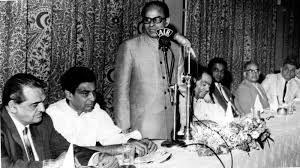The Golconda Blue Diamond: A Royal Treasure Withdrawn from Auction
In the world of high-end gemstones, few can rival the allure and mystique of the Golconda Blue Diamond. This 23.24-carat pear-shaped diamond, once owned by the Holkar dynasty of India, has captured global attention for its rare beauty and royal history. Recently, the diamond’s auction was canceled, leaving both collectors and historians puzzled about its future.

A Jewel of Royal Heritage
The Golconda Blue Diamond hails from the legendary Golconda mines in India, known for producing some of the world’s most extraordinary diamonds, including the famous Koh-i-Noor and the Hope Diamond. The Golconda mines have long been synonymous with India’s diamond wealth, and they have produced many of the most precious gemstones in history.
The diamond’s deep blue hue, a characteristic of the finest blue diamonds, makes it an exceptional gem. Its captivating pear shape enhances its allure, making it stand out among other diamonds. The gemstone’s rich history ties it to the Holkar dynasty, an influential royal family that once ruled over parts of central India, including the region of Indore. The Holkars were renowned not only for their political power but also for their support of the arts and culture, and the Golconda Blue Diamond remained a prized possession passed down through generations.
The Auction Announcement
In early 2025, the auction house announced the sale of the diamond, which sparked considerable excitement. Experts and collectors anticipated that the Golconda Blue would fetch an extraordinary price. Predictions ranged from tens of millions of dollars to possibly surpassing previous records set by other famous blue diamonds.
Auction houses were eager to showcase such a prestigious piece, as its inclusion would demonstrate their ability to attract high-profile clients. The diamond, still set in its original mounting, also serves as a testament to the craftsmanship of the time, with intricate details reflecting the royal tastes of its former owners.
The Withdrawal
However, just as the auction date drew near, the unexpected occurred. The auction house withdrew the Golconda Blue Diamond from the sale. This sudden decision left many in the jewelry world stunned. While auction houses typically avoid sharing specific details about such decisions, several factors might explain this move.
One of the most likely reasons involves the diamond’s provenance. The Holkar family, who once ruled over significant parts of India, still holds a strong connection to the gemstone’s legacy. Concerns over the diamond’s rightful ownership, particularly given the political and colonial history surrounding the Holkar dynasty, may have influenced the decision. In recent years, many former colonies have called for the return of cultural artifacts, and this conversation likely played a role in keeping the Golconda Blue off the market.
Historical Context
The Holkar dynasty has a rich and layered history, with the family holding significant power in the 18th and 19th centuries. At its height, the Holkars ruled much of central India, with their capital in Indore becoming a center for trade, culture, and administration. The family’s treasures, including the Golconda Blue Diamond, symbolized their wealth and influence.
The diamond’s journey is equally fascinating. After passing through generations of the Holkar family, it eventually entered the hands of private collectors. Over the years, it changed hands several times, but its deep ties to Indian royalty remained a core part of its mystique. The diamond’s unique shade of blue, likely caused by trace elements of boron, further enhances its rarity and value.
A Global Conversation on Artifacts and Ownership
The withdrawal of the Golconda Blue Diamond from auction brings attention to a larger global conversation about the ownership of cultural and historical artifacts. As more people become aware of the injustices tied to colonialism, former colonies like India have increasingly called for the return of treasures taken during British rule. The diamond, deeply connected to Indian history, has likely become a symbol in this broader movement for the repatriation of cultural assets.
India’s history in gem trading and diamond mining, particularly during the Mughal Empire and later periods, saw many treasures leave the country for European collections. While the diamond market remains highly lucrative, the question of rightful ownership has gained prominence, especially as countries like India push for the return of their historical artifacts.
The Future of the Golconda Blue Diamond
With the auction now canceled, speculation about the diamond’s future remains high. Will it reappear on the market in the future? Or will it remain in private hands, its story unfolding behind closed doors? Some experts believe that the diamond may end up in a private collection, where its historical significance can be preserved. Others argue that the diamond might eventually return to India, given its strong ties to the Holkar family and the growing trend of repatriating cultural treasures.
What remains certain is that the Golconda Blue Diamond is no ordinary gemstone. Its rich history, royal connections, and rarity have made it a symbol of both India’s past and the global market’s fascination with diamonds. The story of this remarkable stone is far from over, and the next chapter promises to be just as captivating as its past.
Conclusion
The withdrawal of the Golconda Blue Diamond from auction has created ripples throughout the fine jewelry world, shedding light on the ongoing debates about ownership, repatriation, and the ethics of auctioning off historical artifacts. Whether it eventually returns to public view or remains in private hands, one thing is clear: the Golconda Blue Diamond is not just a precious stone; it stands as a living testament to India’s royal past and its enduring cultural heritage.






